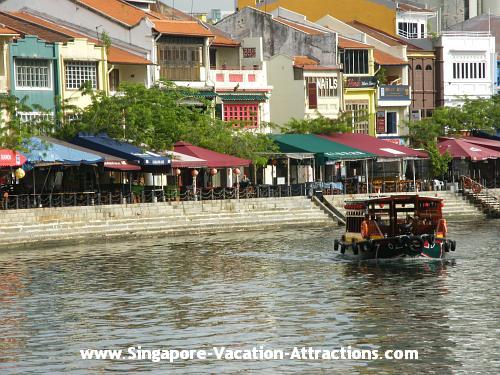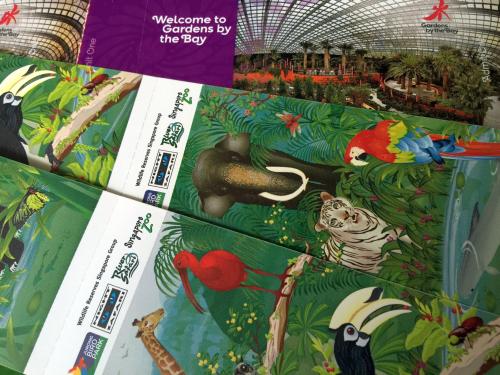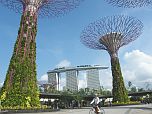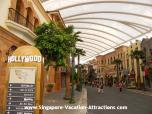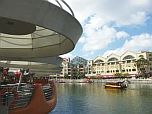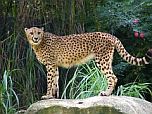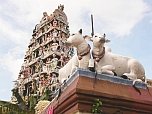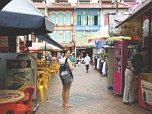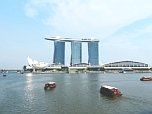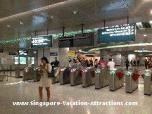Boat Quay
The South Bank of Singapore River
A Brief History of Boat Quay
Boat Quay used to be the hub of commerce and trade in the 1860s that stretches from Elgin Bridge to Cavenagh Bridge. Though it occupies only a small section on the south bank of Singapore River, it was the centre of trade along the river.
The row of shophouses here were once occupied by wholesalers as offices and godowns. Bumboats or lighters were used to transport cargo between the ship in the harbour and the quay. The cargo were then carried by the coolies from the bumboat, which moored along the river, to the shophouses.
Today bumboat plying along the river carrying tourists instead of cargo on sightseeing trip. The shophouses were also being converted into pubs and restaurants. The area comes alive at night when the lights come on and people gather at the pubs and restaurants to chill out.
Boat Quay Photos
Go to Boat Quay Photos page for more pictures
A Tour along the South Bank of Singapore River
This tour starts from Coleman Bridge and ends at Cavenagh Bridge. It will take roughly an hour to complete. It is fun to tour along the bank of the river as you will soon discover a handful of sculptures that were being placed by the riverside.
It's also a historic tour as you will learn along the way the history of the Singapore River from a number of information boards that were being erected by the riverside.
I will also highlight to you where are the ideal spots to pose for a photo so that you can bring back home nice pictures to show off to your friends.
Getting There: From Clarke Quay to Boat Quay
Click on the Singapore Street Map which will show you a map of Singapore River and how to get to Clarke Quay MRT station from any part of Singapore by public buses and MRT(subway).
At Clarke Quay MRT station, look out for signage for Exit E. Once you come out of the second escalator, turn left and go ahead till you come to the following sculptures.
The Merchants of Singapore
A cluster of nine human figures representing a family of merchants at Clarke Quay. It was created by Italy sculptor Michele Righetti. Only five of the merchants were shown here, you have to be there to look for the other four. It's common to have nine or more than a dozen of family members in the old days. The new generation, however, choose to have one or two.
Coleman Bridge
After passing an underground, you will see this bridge when you look back. It was designed by an Irish architect George Drumgold Coleman (1795-1844) and completed in 1840. Being replaced several times, the present one was built in 1986.
Elgin Bridge
Go further ahead, you will come to another bridge. This bridge was named after Lord Elgin, the Governor-General of India. It's an ideal spot where you can take few photos of the Singapore skyline.
Shophouses along Boat Quay
Cross the bridge, you will see a row of shophouses along the river bank. This mark the starting point of Boat Quay, where a number of good restaurants, bars and pubs were located. Read Boat Quay Restaurants and Bars Reviews to choose a restaurant that suit you best before making a reservation.
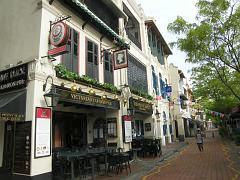 |
Singapore River Cruise Ticketing Kiosk
You will see a ticketing kiosk when you reach shop No. 60 Boat Quay. This is where you can buy a ticket and embark on a Singapore River Cruise.
 |
Ideal Spots for Photo Taking
There are two spots which are very ideal to take a complete view of the Singapore River, one is in front of the UOB Plaza and the other near the Cavenagh bridge.
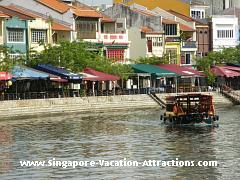 |
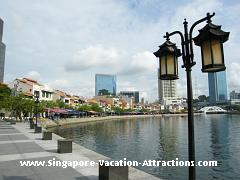 |
Art by the River
You will see the bird sculpture when you are approaching the UOB Plaza. The bird, symbolishing the joy of living, was created by South American sculptor, Fernando Botero.
Another sculpture The River Merchants was located near the Cavenagh Bridge. It looks like merchants were negotiating a deal where the coolies were busy loading goods onto a bullock cart.
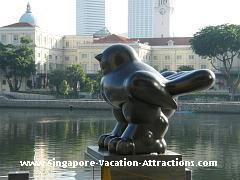 |
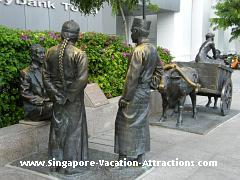 |
The following information board was one of the few that were erected by the riverside. It provided you with a quick overview of a particular event. The last sculpture First Generation showing five boys jumping happily into the river, a common scene in the old days.
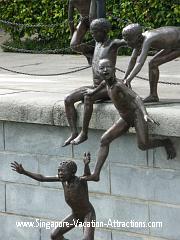 |
Cavenagh Bridge
It was named after the last appointed Governor-General of Singapore, Major-General William Orfeur Cavenagh. Built in 1869, it was considered as the oldest bridge on the Singapore River.
The police notice erected at the entrance of the bridge indicated that it was not meant for heavy vehicle. That's the reason why it was served as a pedestrain bridge once the nearby Anderson bridge was completed in 1910.
Fullerton Hotel
When completed in 1928, the Fullerton Building was considered as the largest building in Singapore. Before being converted into a luxury hotel, it was formerly a General Post Office.
Hotels along Singapore River
Highly Recommended Hotels along Singapore River
Budget Hotels along Singapore River
Mid-Range Hotels along Singapore River
Luxury Hotels along Singapore River
Family Hotels along Singapore River
Tourist Attractions along Singapore River
Photos of Boat Quay
Singapore River and Its History
Embark on a Singapore River Cruise
Clarke Quay
Photos of Clarke Quay
Colonial District and the North Bank of the River
Photos of Colonial District
Asian Civilisations Museum
Hotels along Singapore River
Search this site
Singapore Vacation Deal
- Singapore Attractions Tickets Deal
- Tickets Deal Frequently Asked Questions
- Ticket Deal Customer's Testimonials
Most Visited Singapore Attractions
Popular Attractions
Wildlife, Gardens & Parks
- Singapore Zoo
- Night Safari
- River Safari
- Jurong Bird Park
- Gardens by the Bay
- Singapore Botanic Gardens
- National Orchid Garden
- Mount Faber Park
Family-friendly Attractions
- Sentosa Beach
- Mint Museum of Toys
- Zoo's Rainforest Kidzworld
- Far East Organization Children Garden and Playground
- Singapore River Cruise
Museums & Historical Monuments
- Asian Civilisations Museum
- National Museum of Singapore
- Singapore River
- Colonial Buildings
- Sultan Mosque
- Indian Temple
Sightseeing Tours
Suggested Tour Itineraries
- 5 Days Singapore Tour Itinerary
- 4 Days Tour Itinerary for Family
- Singapore Tour Guide for First Time Visitors
- Half Day Sightseeing Tour
- Singapore City Tour
Must-try Singapore Food
Getting to Singapore Attractions
Getting to:
How to get to:
From city areas to:
Business Partner Site
Learn from SBI how to build a profitable website business by:
This website is Powered by SBI.
